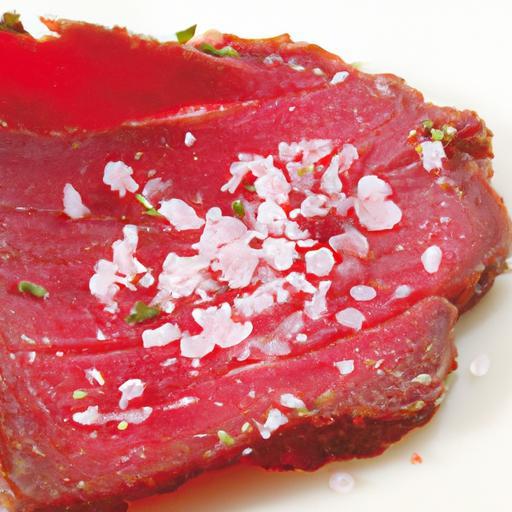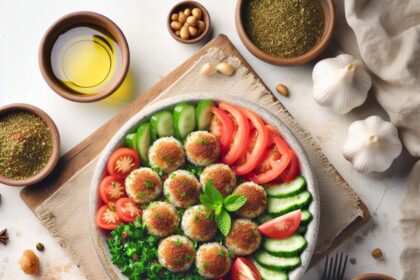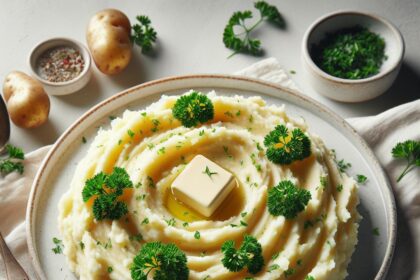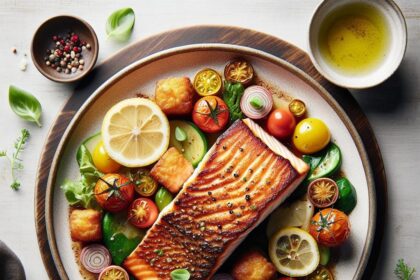Salt-the humble crystal that has seasoned our meals and preserved our stories for millennia-is far more than just a simple seasoning. From the mighty flakes of Maldon to the smoky whispers of Himalayan pink, salt comes in an extraordinary variety, each with its own texture, flavor, and personality. But how often do we truly recognize the unique identity of each salt we sprinkle into our dishes? In this creative guide to labeling each type, we embark on a flavorful journey to master the art of salt identification. Whether you’re a culinary explorer or a curious home cook, understanding the subtle nuances and origins of these salts will not only elevate your cooking but also transform the way you appreciate this essential mineral. Let’s dive into the sparkling world of salt and learn how to label its many faces with clarity, creativity, and a dash of flair.
Mastering Salt: A Creative Guide to Labeling Each Type
Mastering Salt begins with a deep appreciation of its diverse varieties and understanding how each one brings a unique burst of flavor and texture to your dishes. From flaky Maldon to mineral-rich Himalayan pink salt, knowing how to identify, label, and store these salts elevates both your culinary creations and your kitchen’s aesthetic.
Prep and Cook Time
- Preparation: 15 minutes
- Crafting Labels & Organizing Containers: 1 hour
- Total Time: 1 hour 15 minutes
Yield
Enough for labeling and organizing up to 10 salt varieties
Difficulty Level
Medium – Great for food enthusiasts seeking both creativity and functionality.
Ingredients
- Salt Varieties: Maldon Sea Salt, Himalayan Pink Salt, Fleur de Sel, Kosher Salt, Black Lava Salt, Sel Gris
- Labeling Supplies: Kraft paper or waterproof label sheets, permanent fine-tip pens, decorative washi tape or foil stickers
- Salt Containers: Glass jars or ceramic pots with airtight lids (sets of 4-8 oz sizes recommended)
- Design Materials: Clear vinyl laminating sheets or label protectors, calligraphy markers (optional)
- Storage Essentials: Small desiccant packets (optional), chalkboard labels for flexibility
Instructions
- Identify each salt’s distinct characteristics. Take note of the appearance, grain size, flavor intensity, and mineral notes. For example, Maldon Sea Salt is flaky and mild, while Himalayan Pink Salt offers a crunchy texture with a subtle earthiness.
- Design your labels. Write the salt name in clear, elegant lettering on kraft paper or waterproof label sheets. Add its origin and key flavor notes for instant identification-e.g., “Fleur de Sel – Brittany, France: Delicate, briny, and flaky.”
- Enhance labels with creative touches. Use washi tape borders or gold foil stickers to reflect the salt’s heritage or visual vibe. Laminating the labels prolongs their lifespan and durability in a kitchen environment.
- Prepare salt containers. Choose airtight glass jars or ceramic pots that complement your kitchen’s style. Clean and dry thoroughly before filling with each corresponding salt.
- Attach labels to containers. Position labels on the jar front for easy access and identification. Consider adding chalkboard labels on the lids for quick replacements as you rotate stock or receive new salt shipments.
- Include practical storage tips. Insert small desiccant packets to protect salts from moisture in humid climates. Highlight storage instructions discreetly on the label’s backside-“Keep in a cool, dry place, away from sunlight.”
Tips for Success
- For a rustic touch, hand-stamp origins or use natural fiber twine for tying labels around the container necks.
- Try using QR codes linked to recipes or salt-specific flavor pairings for an interactive touch.
- Keep a salt tasting notebook handy to update label flavor notes with every new batch discovered.
- If you want extra versatility, swap out permanent labels for reusable chalkboard or whiteboard tags.
- Store salts away from humidity and heat to maintain the ideal texture and taste.
Serving Suggestions
Once masterfully labeled and stored, salts become a conversation piece during meal prep or dinner parties. Present salt containers clustered on a wooden tray or ceramic platter near your cooking station. Offer small tasting spoons or minimalist bowls so guests and family can sprinkle their preferred salt type over dishes, from roasted vegetables to rich steaks. Garnish presentations by adding fresh herbs or edible flowers to accentuate the exquisite visual appeal of your salt collection.
| Salt Type | Flavor Profile | Texture | Best Use |
|---|---|---|---|
| Maldon Sea Salt | Mild, clean | Flaky flakes | Finishing touches on meats, salads |
| Himalayan Pink Salt | Earthy, slightly mineral | Coarse crystals | Cooking, brining, salt blocks |
| Fleur de Sel | Delicate, briny | Fine, flaky crust | Finishing salt on chocolate or seafood |
| Kosher Salt | Clean, pure | Large, coarse grains | General seasoning, koshering meats |
| Black Lava Salt | Smoky, earthy | Coarse, dark crystals | Garnishing, dramatic plating |
Looking to deepen your culinary expertise? Check out our guide on salt pairing techniques for innovative flavor profiles. For authentic origins and detailed salt science, visit the Salt Institute.

Q&A
Q&A: Mastering Salt – A Creative Guide to Labeling Each Type
Q1: Why is it important to label different types of salt in the kitchen?
A: Salt is more than just a seasoning-each type brings its own texture, flavor, and culinary magic. Proper labeling helps you reach for the right salt effortlessly, elevating your dishes and avoiding accidental flavor swaps. Imagine sprinkling flaky sea salt on your chocolate dessert instead of coarse kosher salt-labeling saves the day!
Q2: What are some creative ways to label salt jars beyond simple tags?
A: Think outside the box! Use miniature chalkboard labels that you can rewrite for seasonal salts, hand-painted wooden tags shaped like salt crystals, or color-coded lids signaling each salt’s flavor profile. Even tiny poems or tasting notes on the label add an artistic twist and make your salt collection feel like a gallery.
Q3: How can I categorize salts to make labeling easier?
A: Break them down by origin (Himalayan pink, Celtic gray), grain size (fine table salt, flaky sea salt), or culinary use (finishing salt, pickling salt). Then assign each category a unique font or color theme on your labels. This system helps your kitchen feel organized while showing off your salt-savvy personality.
Q4: Are there any fun facts to include on salt labels?
A: Absolutely! Did you know that Fleur de Sel is hand-harvested by moonlight in Brittany, France? Or that Black Lava Salt contains activated charcoal? Adding these tidbits transforms your salt jars into miniature storybooks, engaging guests and inspiring your cooking adventures.
Q5: How do creative salt labels enhance the cooking experience?
A: They turn a mundane pantry staple into a source of inspiration. Labels that reflect the history, texture, and taste of each salt invite you to experiment thoughtfully. Plus, a beautifully labeled salt rack doubles as kitchen art, boosting your culinary creativity and enjoyment every time you season.
Closing Remarks
As you sprinkle your newfound wisdom into the culinary world, remember: mastering salt is more than just knowing names-it’s about celebrating the unique stories each grain tells. With this creative guide to labeling every salt type, you’ll not only elevate your seasoning game but also infuse your kitchen with a dash of artistry and precision. So go ahead, label boldly, taste adventurously, and let salt transform from a simple staple into your most trusted culinary companion. After all, in the grand symphony of flavors, every pinch counts.








